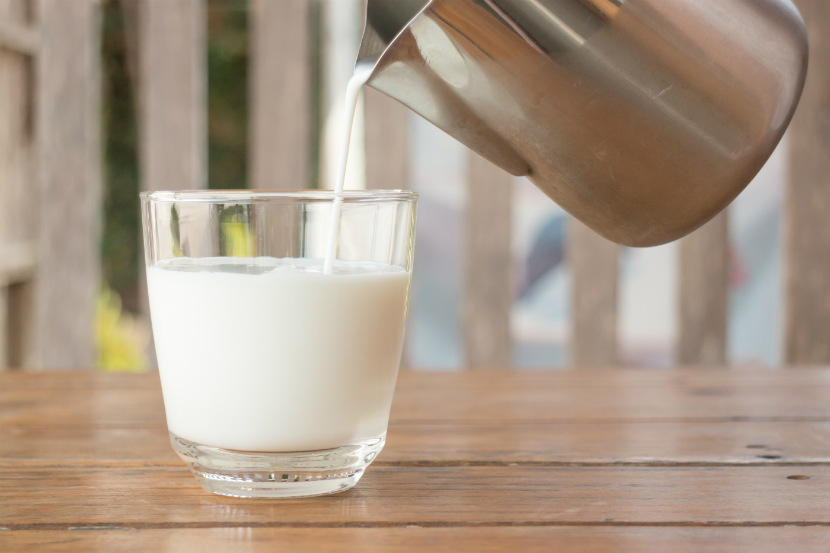
Do you stay away from milk or milk products because you think you have a milk allergy or lactose intolerance? Find out the difference, and learn what to do if you really are allergic to milk.
What is the difference between a milk allergy and lactose intolerance?
A milk allergy is a reaction to the proteins found in milk. Your body’s immune system reacts to the milk proteins and then triggers a variety of symptoms.
Lactose intolerance describes your body’s reaction to the natural sugar (called lactose) found in milk. It is not an allergy and does not involve your immune system. If you are lactose intolerant, your body doesn’t have enough lactase which is an enzyme needed to help break down lactose.
Your family doctor can help determine whether you have a milk allergy or lactose intolerance.
What are the symptoms of a milk allergy?
The symptoms of a milk allergy can start either right away or hours after drinking milk or eating a food that contains milk. Some of the common symptoms are:
-
stomach cramps, gas (flatulence), diarrhea, vomiting, nausea
-
rash, hives, eczema, red and itchy skin
-
runny nose, nasal congestion, coughing, wheezing (trouble breathing)
-
swelling of the eyes, face, lips, throat and tongue
In rare cases, a milk allergy can be life-threatening.
Lactose intolerance also causes stomach cramps, gas, diarrhea and vomiting. But rash, hives, runny nose, coughing and swelling are NOT symptoms of lactose intolerance.
Will my child outgrow her milk allergy?
According to the Allergy Asthma Information Association, 2-3% of infants are allergic to milk, and most of them will grow out of a milk allergy by the time they are three years old.
What should I look for on a food package if I have a milk allergy?
Stricter Canadian guidelines require that milk-containing products are clearly labeled. The ingredient list will say “contains: milk” if it contains this ingredient. Reading the ingredients on a food package is another good way to make sure that you don’t eat foods that contain milk or other hidden sources of milk.
AVOID eating the food if you read:
-
“milk” in the ingredients list
-
the words “may contain milk” or “may contain traces of milk” on the food package
Avoid any of these other names for milk and milk ingredients:
-
casein, caseinate, rennet casein
-
curds
-
delactosed or demineralized whey
-
hydrolyzed casein, hydrolyzed milk protein
-
lactalbumin, lactalbumin phosphate
-
lactate/lactose
-
lactoferrin
-
lactoglobulin
-
Opta™, Simplesse® (fat replacers)
-
whey, whey protein concentrate
Be aware of these foods that contain or may contain milk or milk protein.
-
Brown sugar
-
Candy
-
Caramel colouring/flavouring
-
Casein in wax coated fresh fruits and vegetables
-
Crackers
-
Egg substitutes
-
Flavoured coffee, coffee whitener, non-dairy creamer
-
Glazes, nougat
-
High protein flour
-
Meats – e.g. canned tuna, deli meats, hot dogs, pâtés, sausages
-
Potatoes – e.g. instant, mashed, or scalloped potatoes, French fries, potato chips
-
Seasonings
-
Snack foods – e.g. fruit bars, granola bars
-
Tofu
For more food and non-food sources of milk and milk protein sources, see this factsheet Milk Allergy, by the Canadian Food Inspection Agency.
How can I get enough calcium and vitamin D without milk?
Drink fortified soy beverage. One cup contains as much calcium and vitamin D as a cup of milk. Drink at least 2 cups of fortified soy beverage every day to get enough vitamin D.
Drink calcium fortified orange juice. One cup contains as much calcium as a cup of milk, and some brands contain vitamin D too. Check the labels.
Eat other calcium-containing foods such as almonds, canned salmon (with the bones), beans and bok choy. See Food Sources of Calcium and the Calcium Calculator for a list of more calcium-containing foods.
Take a calcium supplement. Learn more about choosing Calcium Supplements that are right for you.
For more information:
Managing a Milk Allergy by Hospital for Sick Children
Food Allergies and Intolerances by UnlockFood
Be Food Allergy Aware when Packing School Lunches by Health Canada
Food Allergy Canada
Last Update – August 16, 2018